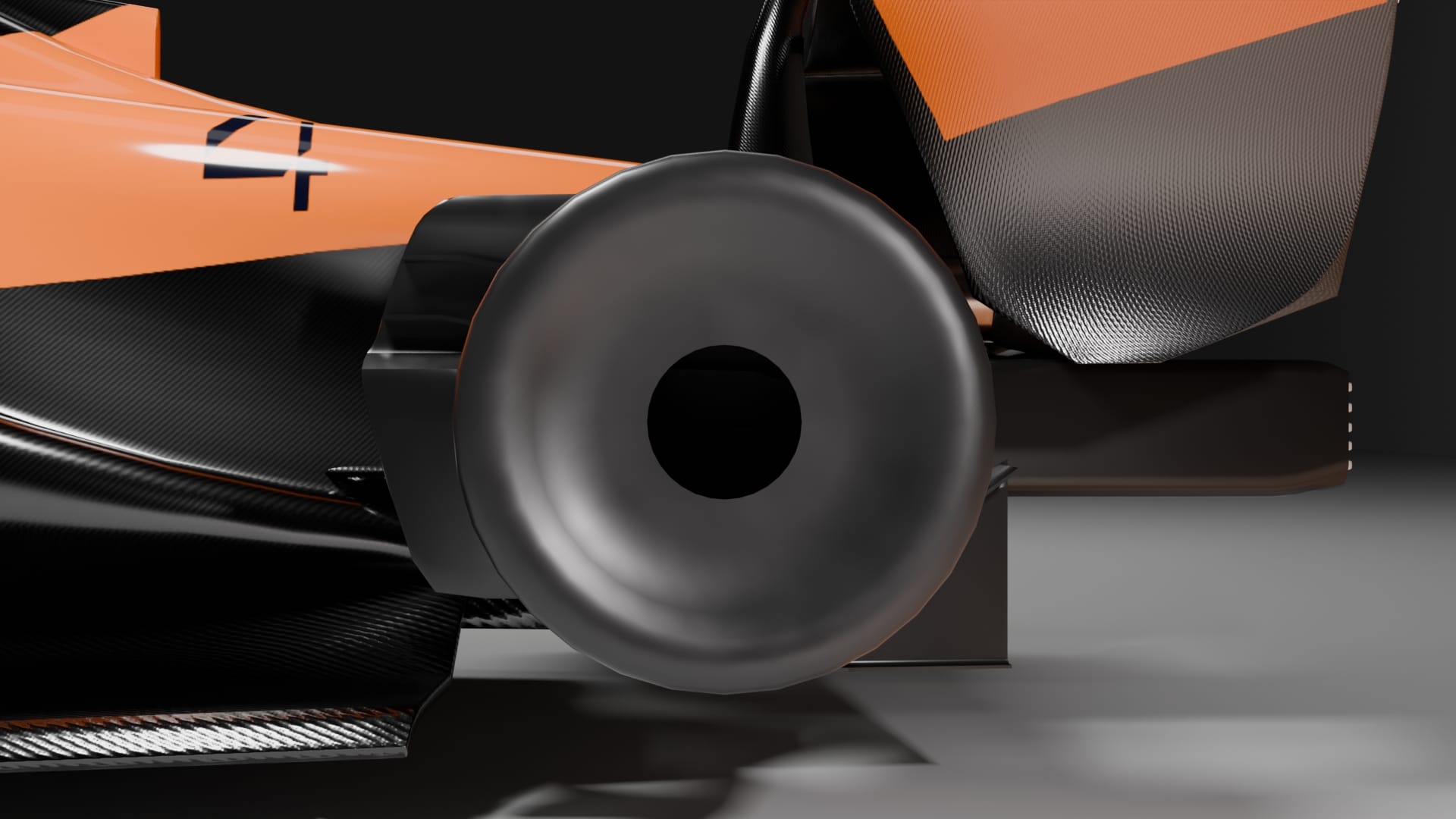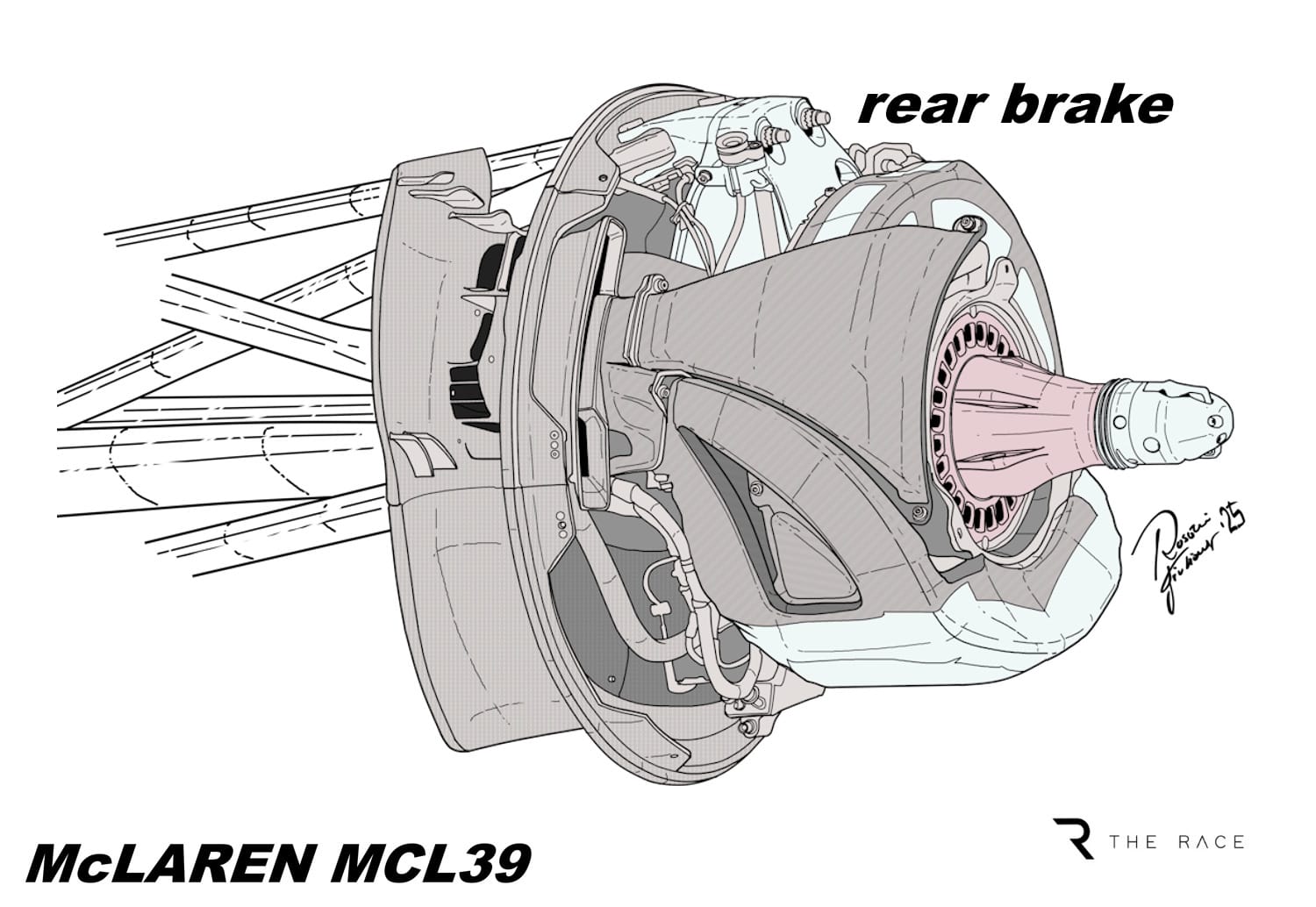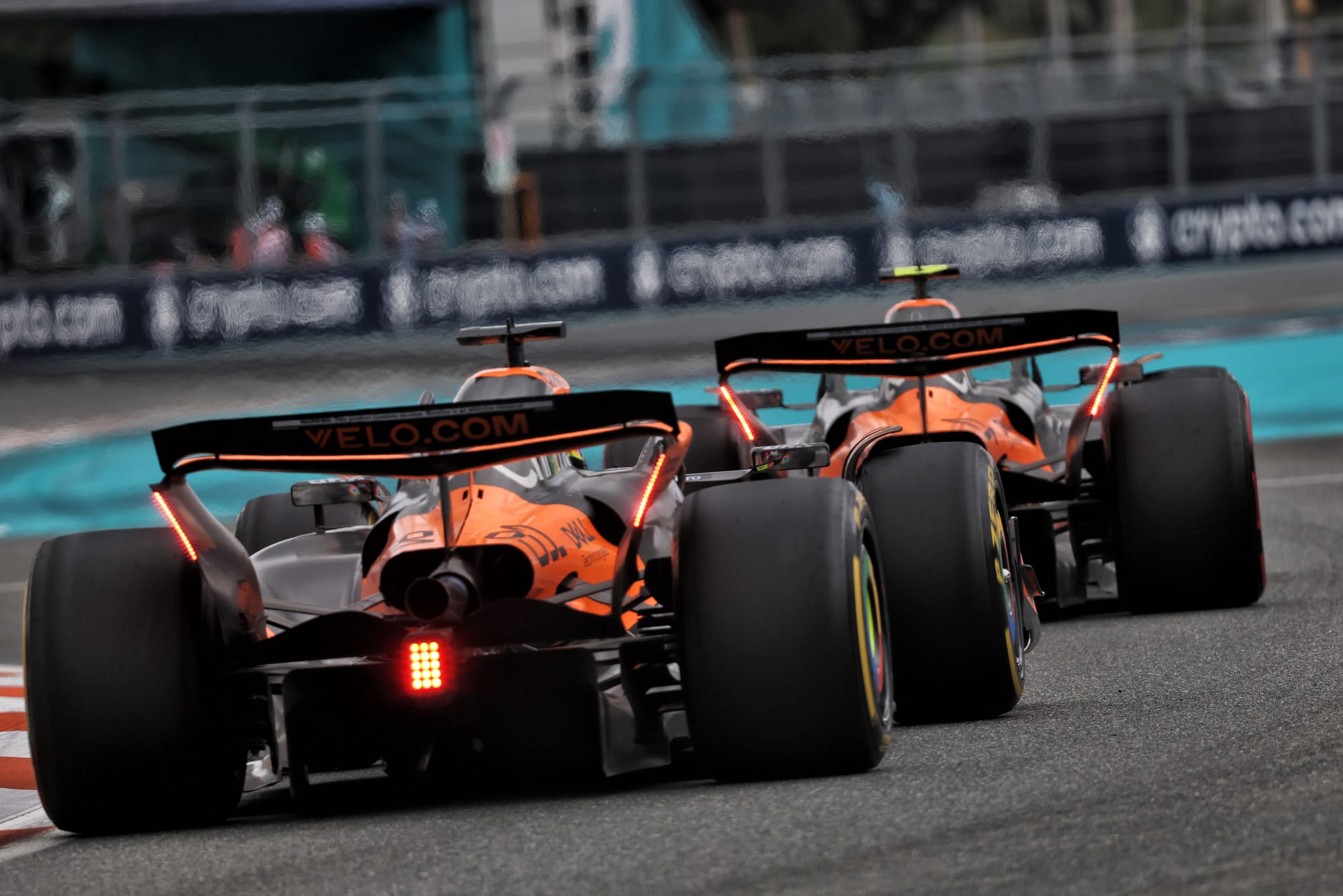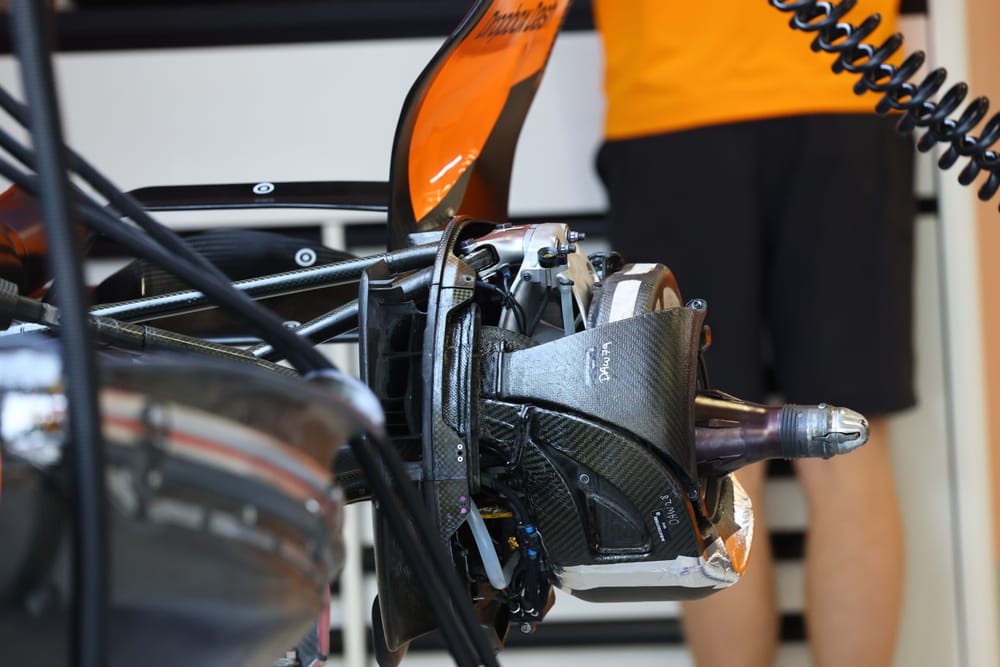McLaren's Formula 1 rivals are continuing to scratch their heads over just how it is better able to manage its tyres right now.
The focus is very much on the rear brake system of the MCL39, with McLaren's ability to control temperatures here appearing to pay dividends when it comes to preventing its tyres overheating.
With no obvious answer in the paddock as to what McLaren is doing, beyond the design clues given away by its intricate design, some fascinating theories have emerged about the squad potentially using some clever tricks to achieve its aim.
There were allegations made against it by Red Bull last year about it injecting water in its tyres - but this was strongly denied by McLaren and no evidence of this was ever found.
However, amid the renewed intrigue on McLaren's brakes prompted by thermal images of its brake drums obtained by Red Bull, fresh theories have gathered traction in recent days about it using some trick systems or materials.
One of the ideas that has been widely spoken about is of it using phase-changing material to help control temperatures inside its brake drums.
This could either be through using a component (like a metal strip) that changes shape to alter airflow, or a substance that transforms from a solid to a liquid when it hits a certain temperature - which then limits further heat gains.

The suggestion was that McLaren could be applying such materials on the inside of the rear brake drum to minimise any heat transfer to the wheel rim and tyres - and therefore help keep temperatures under control at the rear.
The theories were fascinating, the material available and the technology certainly interesting.
However, the idea itself falls down when it comes to reality - because, according to the FIA, F1's regulations strictly outlaw it.
There are two specifics area of the rules at play here, although one of these could have grounds for some counterarguments.
The material limits

The first area revolves around the specific phase-changing material itself.
F1 teams are limited in terms of the materials that they are allowed to use. Article 15 of F1's technical regulations is aimed at ensuring teams do not go chasing hugely expensive exotic elements in the quest for success.
Some specific materials are outlawed, such as metal matrix composites, additive manufactured materials containing beryllium, and 3D fibre reinforcement of polymer composite materials.
Phase-changing materials fall under this area a little bit too as Article 15.4.1b also outlaws: "Shape memory materials except for piezoelectric materials used in electrical sensors."
The regulations classify a shape memory material as one that: "Is configured to move reversibly between two [or more] different shapes when it is subjected only to a non-mechanical uniform stimulus [thermal, electrical, magnetic, optical, etc], or exhibits a reversible phase change when subject to an applied stress.
"For clarity, this does not include consequential geometric changes that result solely from the effects of thermal expansion."
This regulation definitely outlaws the use of any materials that change shape when they hit a certain temperature to alter airflow.
So a metal strip that, when it hits a certain temperature, moves to open and close channels to divert hot and cold air would be illegal.
However, the wording on the type of phase-changing technologies that have been spoken about recently is different - as they are not outlawed in a similar way.
These are referenced as only not being allowed to be used when an 'applied stress' is involved.
This effectively means that phase-change materials can be used if there is a heat stimulus, but cannot be if this involves some form of mechanical stress.
However, this does not open the door to such phase-changing material being used in the brake drums, because there are other regulations that prevent that happening.
Tyre treatment

On a basic level, if a team was to use a phase-change material that turned from solid to liquid that helped cool the brakes and tyres, then it would fall foul of Article 11.5, which states: "Liquid cooling of the brakes is forbidden."
But more significantly, according to the FIA, the article that totally prevents any form of phase changing or other similar sophisticated technology being used is Article 10.8.4 of the technical regulations, which relates to the treatment of tyres.
This rule is clear that the only way tyres can be heated is with blankets.
And it goes on to state: "Any other device, system or procedure [except for driving of the car] the purpose and/or effect of which is to heat the wheels, hubs or brakes above the ambient air temperature, or to maintain their temperature if they are already warm, is prohibited."
It is this catch-all element that would make the use of phase change materials, and any similar system, illegal for the cooling of brakes or tyres in the eyes of the FIA.
So, considering the governing body has already inspected the McLaren brake system several times and seen nothing untoward there, this idea can effectively be ruled out as something McLaren is doing.
An FIA spokesman told The Race: "We believe that the only permitted method of cooling brakes, wheel drums, or tyres is airflow generated by the forward movement of the car."
This means that McLaren's brake advantage comes down to clever engineering, through a likely combination of its unique internal ducting, pressure management of its airflow, and perhaps also it relying on more energy retardation to slow its car and help limit the work its brake system has to do.
It is also important to point out that McLaren's impressive tyre temperature management is also not likely all down to its brake temperatures alone - as other factors such as its aerodynamics and suspension kinematics will have their role to play in helping in this area too.



